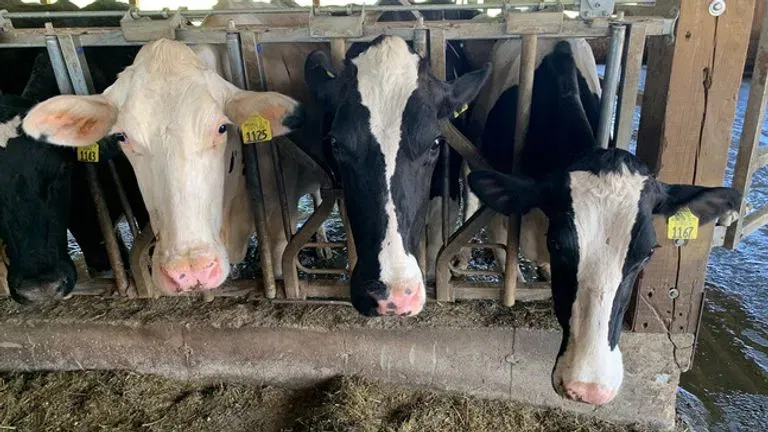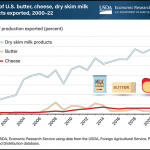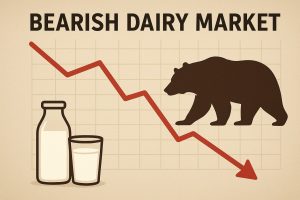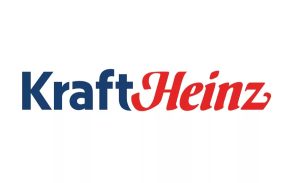
The Federal Reserve will hold interest rates steady for another month, a good sign of the economy, but dairy farmers aren’t out of their financial woes yet. The Agriculture Department announced the October Federal order Class III milk price at $16.84 per hundredweight, down $1.55 from September, driven primarily by a sharp drop in cheese prices. The benchmark is a woeful $4.97 below October 2022 and the lowest October Class III since 2018.
The year has seen a high of $19.43 in January and a low of $13.77 in July. The ten-month Class III average stands at $17.10, down from $22.20 at this time a year ago, and compares to $16.86 in 2021.
Late Friday morning Class III futures portend a turnaround in November but not much. The November contract was trading at $17.26 per cwt., December at $17.26, January 2024 at $17.40, February at $17.83 and March was at $18.22, all in the right direction but still short of profitability for most dairy producers.
The October Class IV price is $21.49, up $2.40 from September, thanks primarily to the record breaking butter price, but is $3.47 below a year ago, yet the highest Class IV price since December 2022. Its ten-month average is at $18.93, down from $24.82 a year ago, and $15.44 in 2021.
Speaking in the November 6 Dairy Radio Now broadcast, StoneX broker Dave Kurzawski said few if any dairy farmers can make milk at this price but “At the moment we haven’t seen a typical seasonal demand in cheese.” He added that cheese is “not at a terrible price historically but definitely lower than we thought it would be, namely closer to $1.80 to $1.85 per pound.”
“We could yet see a seasonal push in demand in November for cheese,” he said. “We produced a lot of cheese this year relative to demand, but exports have been off. Maybe we have enough cheese going into the holidays, but at some point there’s a pipeline refill that has to happen and milk production is still flat. A lot of people are projecting that milk output will come back but it hasn’t as of yet and given on-farm economics I don’t expect it’s going to get much better even in the first part of the year. When demand is slow or people have enough the price can come down, he concluded, but he believes we are underestimating the impact of a questionable milk supply.
That lack of demand appeared in cheese as November got underway. CME block cheddar closed the first Friday of the month at $1.6650 per pound, down 6.50 cents on the week and 34.50 cents below a year ago as traders anticipated the afternoon’s September Dairy Products report.
The barrels finished at $1.64, 4.25 cents lower, 33.50 cents below a year ago, and 2.50 cents below the blocks.
Sales totaled 16 loads of block on the week and 69 for the month of October, up from 24 in September. Barrel sales totaled 22 for the week and 66 for the month, down from 75 in September.
Midwest processors say milk suppliers are working to lock in extra milk loads for the end of year holidays, according to Dairy Market News (DMN). Current spot milk supplies are slowly edging higher week to week and mid-week spot prices ranged from Class to $1 over. Cheese inventories remain “somewhat balanced.”
Western cheese demand is mostly steady from retail and food service, says DMN, and inventories are “comfortable.” A few manufacturers indicate inventories are decreasing slightly. Demand from international buyers is moderate to light. Domestic prices and near-term futures pricing compared to European Union-Oceania prices are not encouraging stronger export activity. Demand for Class III milk is strong to steady but extra spot loads are somewhat limited in some parts of the West, says DMN, and holding production steady.
After dropping almost 17 cents the previous week, CME butter shot up almost 11 cents Monday to $3.30 per pound, but closed Friday at $3.1075, down 8.50 cents on the week, down 39.50 cents from its October 6 peak, but still 33.50 cents above a year ago when it plunged 36.75 cents. There were six loads traded on the week and 36 for the month, down from 124 in September.
Butter market tones teetered between market signals this week, says DMN, but marketers expected it. Holiday orders have been made and a number of contacts say the record price points are unlikely to return the rest of this year. Bulk butter is available but far from abundant, according to buyers in the region.
Cream is tight in the West despite some handlers noting improved fat component levels in milk. Spot cream loads have tightened compared to the previous week in some parts of the region while loosening in others. Butter manufacturers say extra cream buying is limited by current prices. Domestic butter demand is strong to steady and current inventories are in good shape for holiday demand. Fourth quarter demand from Canadian purchasers has picked up again and closer to the first three quarters while export demand is light elsewhere, says DMN.
Grade A nonfat dry milk closed Friday at $1.1850 per pound, 1.25 cents lower on the week and 21.50 cents below a year ago. There were only 2 sales posted on the week and 52 for the month, down from 61 in September.
Dry whey saw its Friday finish at 38.75 cents per pound, down 1.25 cents on the week and eight cents below a year ago. Sales totaled 47 loads on the week and 195 for the month of October, up from 109 in September.
The U.S. corn harvest was 71 percent complete as of the week ending October 29, according to the USDA’s latest Crop Progress report, up from 59 percent the previous week, and 3 percent behind a year ago though five percent ahead of the five-year average.
Soybeans were 85 percent harvested, up from 76 percent the previous week, 2 percent behind a year ago, but 7 percent ahead of the five year average.
Falling feed prices and a rising all milk price resulted in a third consecutive rise in the monthly milk feed price ratio. The Agriculture Department’s latest Ag Prices report put the September ratio at 1.89, up from 1.67 in August, and 1.71 in September 2022, first month to be above the previous year since November 2022. The ratio was below the five-year average for the sixteenth month running, however, as the average ratio for September is 2.03.
The index is based on the current milk price in relationship to feed prices for a ration consisting of 51 percent corn, 8 percent soybeans and 41 percent alfalfa hay. One pound of milk would purchase 1.89 pounds of dairy feed of that blend.
The all milk price average increased for the second month in a row, hitting $21.00 per hundredweight, highest since March 2023, up $1.30 from August, but still $3.10 below September 2022.
California’s average at $21.30 per cwt., was up $1.80 from August, but $2.50 below a year ago. Wisconsin’s, at $19.80, was up 60 cents from August but $2.50 below a year ago.
The national corn price averaged $5.73 per bushel, down 52 cents from August, after falling 49 cents the previous month, and $1.88 per below September 2022.
Soybeans averaged $13.20 per bushel, down 90 cents, after falling 60 cents the previous month, and were $1 per bushel below a year ago.
Alfalfa hay slipped to $224 per ton, down $6 per ton from August and $56 per ton below a year ago.
Looking at the cow side of the ledger, the September cull price for beef and dairy combined climbed to an average $114 per cwt., down $1 from August, $22.80 above September 2022, and $42.40 above the 2011 base average.
Quarterly milk cow replacements averaged $1,850 per head in October, up $90 from July, and $120 above October 2022. Cows averaged $1800 per head in California, up $135 from July, but $50 below a year ago. Wisconsin’s average, at $1,990 per head, was up $80 from July and $150 per head above October 2022.
September milk production margins were the highest of 2023 by 18 cents over January, according to dairy economist Bill Brooks, of Stoneheart Consulting in Dearborn, Missouri. Brooks says “Income over feed costs in September were above the $8 per cwt. level needed for steady to higher milk production for the first time since January. Input prices were lower, but all three commodities were in the top ten for September all time. Feed costs were the fourth highest ever for the month of September and the fiftieth highest of all time.
“Dairy producer profitability for 2022 in the form of milk income over feed costs, was $11.91 per cwt.” says Brooks. “The profitability was $4.12 above 2021 and $2.50 higher than the 2017-21 average. The increase in 2022 milk income over feed costs was a result of the milk price increasing more than feed. Income over feed in 2022 was above the level needed to maintain or grow milk production.”
“Milk income over feed costs for 2023 (using October 31 CME settling futures prices for Class III milk, corn, and soybeans plus the Stoneheart forecast for alfalfa hay) are expected to be $7.90 per cwt., a gain of four cents per cwt. versus last month’s estimate. 2023 income over feed would be below the level needed to maintain or grow milk production, and down $4.01 per cwt. from 2022’s level.”
“Looking at 2024, milk income over feed costs are expected to be $12.43 per cwt., a gain of $4.53 per cwt. versus the 2023 estimate. Income over feed in 2024 is 82 cents per cwt. higher than last month and would be above the level needed to maintain or grow milk production,” Brooks concludes.
The latest Margin Watch (MW) from Chicago-based Commodity and Ingredient Hedging LLC., reports “Dairy margins deteriorated over the second half of October as Class III Milk futures sank to new contract lows in nearby expirations following a surge in price earlier in the month while feed trends were mixed with corn weakening while soybean meal continued its sharp advance.”
“USDA revised milk production lower for the past several months in their latest monthly report following adjustments to the milking cow herd which better align now with recent slaughter trends,” the MW stated. The MW also detailed the September Milk Production report, which I previously reported on.
The MW stated “Through the first eight months of 2023, U.S. dairies sent 121,700 more cows to slaughter than during the same period in 2022, although the culling pace has slowed recently as feed costs have retreated. September dairy cow slaughter was 20,000 head lower than last year and the lowest September figure since 2014.” The MW concluded with highlights from the September Cold Storage report.
The week ending October 21 saw 54,700 cows go to slaughter, down 900 from the previous week, and 6,200 or 10.2% below a year ago, largest year-over-year decline since February 2022, according to HighGround Dairy (HGD). Year to date 2,545,500 head have been culled, up 83,900 or 3.4% from a year ago.
The October 30 Daily Dairy report (DDR) points out that there are fewer dairy heifers available to replace cows sent to slaughter. The DDR says “There were just 3.65 million dairy heifers on hand July 1, the lowest mid-year tally since 2004. Through August, dairy producers were able to cull hard and keep their barns full of heifers and milk cows purchased from dairies exiting the industry. But more recently, fewer operations have been closing down, and the supply of heifers for sale has begun to dry up.” The U.S. herd may stop contracting, the DDR concludes, “But tight heifer supplies will limit rapid growth in the milk-cow herd throughout the next year.”
Checking things globally; this week’s GDT Pulse, Number 36, saw prices continue to weaken on Fonterra skim milk and whole milk powder. Sales totaled 4.97 million pounds, up from 4.9 million on October 24.
HGD reports “2,254MT or 100.2% of the total 2,250MT on offer was sold. 135MT more of Instant whole milk powder (WMP) was sold and 83MT less of Regular WMP was sold versus the last Pulse auction. 100% of the 1,000MT of SMP on offer was sold this auction,” says HGD.
StoneX reminds us, “The volume represented in GDT Pulse is a fraction of what trades on a regular GDT event, particularly on SMP. It will be interesting to see if next week’s GDT event confirms this downtrend in the past two weeks on Pulse or if prices finish roughly flat to where current Pulse prices are.”
Cooperatives Working Together (CWT) member cooperatives accepted 26 offers of export assistance from CWT this week that helped them capture sales contracts for 2.5 million pounds of American-type cheese and 256,000 pounds of whole milk. The product is going to customers in Asia, Central America, the Caribbean and South America, and will be delivered through January 2024.
CWT’s 2023 sales now total 41.3 million pounds of American-type cheeses, 908,000 pounds of butter, 39 million pounds of anhydrous milkfat, 38.8 million pounds of whole milk powder and 7.3 million pounds of cream cheese. The products are going to 25 countries in five regions and are the equivalent of 744.3 million pounds of milk on a milkfat basis.
In politics, the National Federal Milk Marketing Order Pricing Formula Hearing was recessed on October 11 and will reconvene on November 27 at the 502 Event Center, in Carmel, Indiana. If the hearing is not completed by December 1, the hearing will reconvene at the Palomino Ballroom, in Zionsville, Indiana.
Lee Mielke is a graduate of Brown Institute in Minneapolis, Minnesota. He’s formerly the voice of the radio show “DairyLine” and his column appears in agricultural papers across the U.S. Contact him at lkmielke@juno.com.























